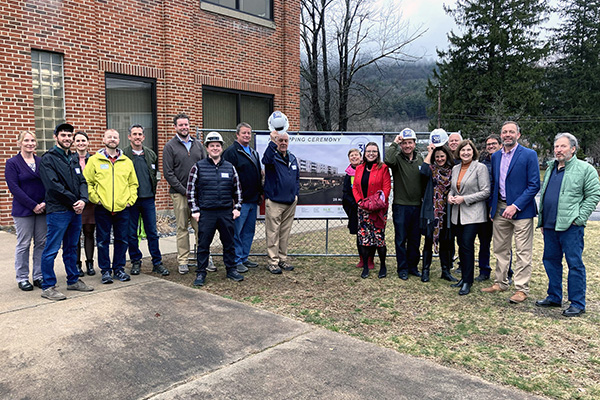HIGHLIGHTS
PROGRAM UPDATES
WoodWorks Help Desk Enables High Volume of Light-Frame Project Support The AWC Strengthens Lumber’s Sustainability Story With Mill-Level Data Collection The SLB Sponsors Former Super Bowl Champion-Turned-Designer to Deliver Poignant Talk About Wood at HBCU Event Video and Webinar Highlight Opportunities for Wood Construction in the Office SectorProgram Updates
WoodWorks Help Desk Enables High Volume of Light-Frame Project Support
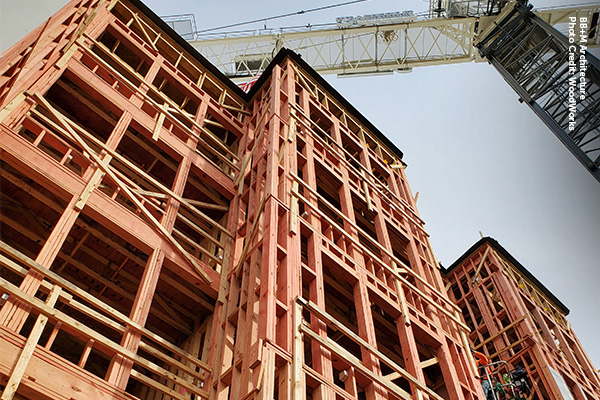
Last year, WoodWorks answered 636 questions on light-frame wood construction through the help desk alone. The help desk operates to support the work that WoodWorks’ field team does to directly influence and convert projects, ensuring that design teams can resolve issues quickly—and providing a resource-efficient, high-impact way to increase wood use. Light-frame construction may be a tried-and-true framing approach, but it continues to evolve, and a lot of structural engineers have questions about code-compliant detailing, especially on larger projects. Many are handled by the help desk, which allows WoodWorks to provide an increased volume of support, and the desk’s suggestions often lead to a more efficient design. For example:
- An engineer had questions about how to detail a large light-frame roof. The roof had large openings, and WoodWorks provided several options for a wood diaphragm design. The staff also offered suggestions for optimizing the design to reduce costs.
- Another client had taken an unnecessarily conservative approach to floor-to-floor strapping for uplift. WoodWorks provided justification for reduced strapping, making the design more economical.
- The help desk provided information clarifying an issue regarding compression bracing that is not expressly answered in the code. The client’s co-worker is on the board of STRUCTURE magazine, and WoodWorks’ assistance resulted in an invitation to contribute an article on the topic.
The help desk also offers plan reviews—a unique and valuable service that accentuates the benefits of wood use. For example, on a recent four-story project in Florida with a light-frame and steel ground level, WoodWorks identified an opportunity to eliminate a large portion of the steel frame and replace those members with glulam. The reviewer also suggested a design approach with wood beams installed at the end of a bearing wall to make the joist spans even, allowing for easier installation, and provided details to address potential shrinkage. The contractor was thrilled and believes the beams alone will save the client about $125,000 in just one quadrant of the building.
The AWC Strengthens Lumber’s Sustainability Story With Mill-Level Data Collection
Data collection for the AWC’s Life Cycle Assessment Database—which gathers environmental product declaration and fiber sourcing data—saw stronger industry participation in 2023, setting the stage for the AWC to reach a key milestone in this multiyear project with the completion of updated regional softwood lumber EPDs.
The new U.S. regional EPDs will represent the U.S. West, Northeast, Southeast, and Central regions and are expected to be completed by the end of 2024. Increased data collection means that the publication dataset will go from representing 9% to 49.4% of Inland Northwest volume, 15.3% to 53.9% of Pacific Northwest volume, and 26.6% to 53.4% of Southern volume in the new regional EPDs. These more precise EPDs mark a major step forward in providing the carbon impact data necessary to be credible with the design community. Providing data at this level of detail is becoming the standard in order for wood to be specified.
In order to realize the potential demand, the softwood lumber industry needs to provide more robust mill-level data. The North/Northeast region, where AWC does not have many member mills, did not capture sufficient volume in the survey. The AWC will be working with the SLB and the Northeastern Lumber Manufacturers Association (NeLMA) in the second quarter to collect softwood lumber data from their member mills. The AWC also hosted a two-day event in January, which had robust participation from major wood products industry associations and companies, to kick off an expansion project for the mill survey funded by a USDA Forest Service Wood Innovations Grant. To have your mill-level data incorporated in the survey, please contact Anna Ostrander at aostrander@awc.org.
The SLB Sponsors Former Super Bowl Champion-Turned-Designer to Deliver Poignant Talk About Wood at HBCU Event
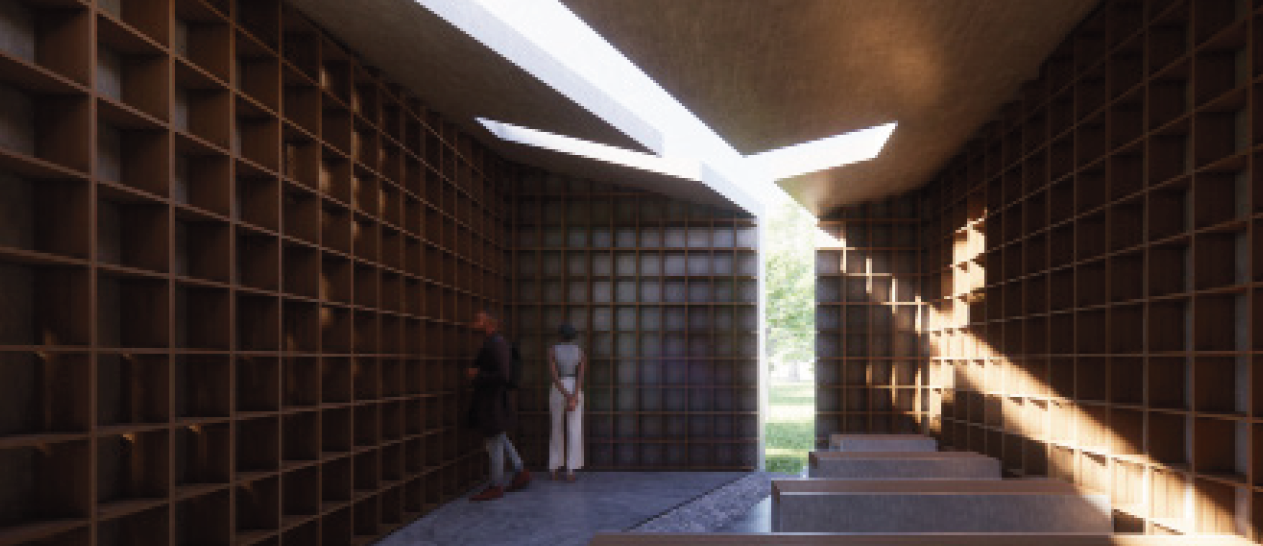
SLB Education and Think Wood secured a speaking opportunity for 2014 Super Bowl champion Michael Bennett during the 2024 Historically Black College and Universities Spring Forum hosted by the University of DC in March. Bennett discussed his journey from the world of professional football to the founding of his design practice Studio Kër as a platform to create spaces that harmonize with the natural world and encourage meaningful interaction between humans.
His talk at the HBCU Forum provided students and faculty with an overview of how he incorporates wood into his designs. In addition to lumber’s application in various building typologies, he reinforced the benefits of strength, versatility, and speed of installation while championing how these products promote sustainable forestry practices. More than 100 student and faculty attendees were noticeably engaged, asking thoughtful questions and providing encouraging feedback throughout Bennett’s talk.
Engaging architecture students to showcase wood as the future of construction helps familiarize these emerging professionals with the products and systems so they are prepared to use wood solutions when they enter practice. Inspiration and memorable moments are key to the Education program, and the industry’s message is amplified when delivered by a unique and credible advocate.
Bennett’s address was the first element of a yearlong sponsorship that the SLB has secured with Studio Kër. The collaboration also includes work on a chapel and traveling exhibition featuring a CLT form used for education and dialogue around preserving Black historical and sacred spaces.
Video and Webinar Highlight Opportunities for Wood Construction in the Office Sector
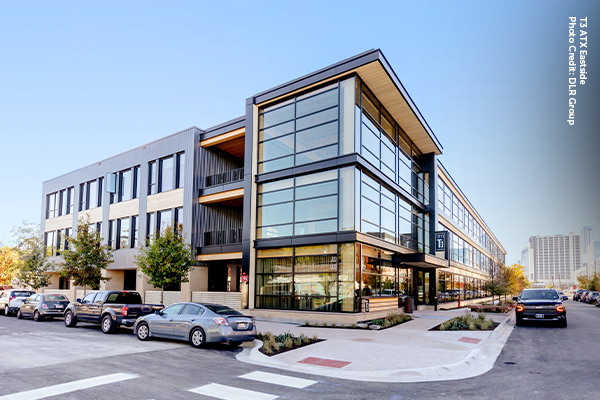
Despite the advent of remote work and plunging commercial real estate values, the office market remains one of the strongest opportunities for lumber market growth, with an incremental volume potential in the office/bank sector of 345 million to 413 million board feet of lumber by 2035 (Forest Economics Advisors’ 2024 U.S. Outlook for the SLB). A new video from Think Wood highlights opportunities for mass timber in this sector, showing how wood construction can differentiate an office project by improving the occupant experience, enhancing sustainability, and increasing overall value.
The video features the design and development teams from two mass timber office projects, T3 ATX Eastside and the Houston Endowment Headquarters, providing insights and lessons learned on how they used mass timber to enhance their projects.
“Designing with mass timber is certainly an important step toward building with lower embodied carbon, but we also get really excited about the beauty of the material and the honest aesthetics that come from the exposed structure,” Steve Cavanaugh, Principal and Design Leader at DLR Group and architect for T3 ATX Eastside, told Think Wood. “Projects like T3 ATX Eastside help advance sustainable practices and promote integrative design thinking, which in turn will push architecture and construction forward. We are thankful that Think Wood is celebrating that.”
Think Wood also sponsored a live webinar this month, “Mass Timber as a Solution for Commercial Offices,” with three influential architects discussing how they used innovative wood structural systems in midsized new commercial buildings and office retrofits. The webinar had 723 attendees, who will receive follow-up emails with additional Think Wood and WoodWorks resources.
Spotlight
Millennials’ Movements Reveal Multifamily Market Opportunity
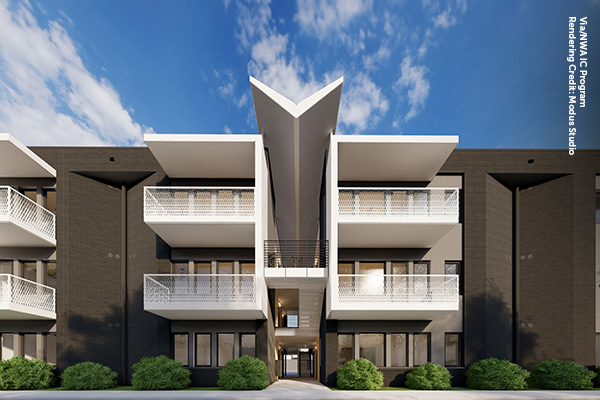
Millennials sparked an urban renaissance in the 2000s as they flocked to cities in pursuit of economic opportunities, culture, and recreational amenities. As they enter middle age and start families, millennials are moving out of cities and into the suburbs—and new research co-authored by Harvard University’s Joint Center for Housing Studies argues that a lack of affordable and right-sized housing in urban areas may be driving the shift.
The research offers further evidence that a shortage of housing is causing major affordability issues across the country. The JCHS’s “2024 America’s Rental Housing” report found that a record-high 22.4 million renter households spent more than 30% of their income on rent and utilities, more than at any other time in history.
To make housing more affordable across the United States, a variety of housing types are needed—especially multifamily—and the SLB is working to secure the industry’s position in medium- and high-density residential construction. Those efforts include direct funding for innovative projects such as Via/NWA IC Program, a pilot housing project in Northwest Arkansas using mass timber, light-frame, and prefabricated construction to grapple with the affordable housing shortage.
Beyond the Mass Timber Competition, in which Via was a winner last year, the SLB’s funded programs—WoodWorks, Think Wood, the American Wood Council, and SLB Education—are working cooperatively to reduce barriers to this construction type and raise awareness about the potential for wood construction to make midsize, two- to eight-story multifamily projects economically and environmentally viable.
- Light-frame projects make up 66% of WoodWorks’ reported projects, and multifamily accounted for 73% of those light-frame projects in 2023.
- The AWC has long worked to educate local governments and building officials about the affordability benefits and safety of wood systems, such as in Los Angeles, where a ban on Type IV and V wood construction was recently allowed to expire.
- Think Wood produces content focusing on the use of wood to make housing more affordable, including the Growing Good Homes webinar.
- The SLB-sponsored Timber in the City student design competition focuses on overbuilds, or vertical extensions, challenging architecture students to imagine denser urban living with wood construction.
Through marketing and education, direct project support, and involvement in codes and standards development, the SLB’s investments are targeted to ensure as many of those new multifamily buildings as possible are built with wood construction.
Industry Resources
FEA's Housing Dashboard
This housing dashboard is provided compliments of Forest Economic Advisors (FEA)
View the March Housing Dashboard
Virginia Tech's Monthly Housing Report
This monthly housing commentary report is a free service of Virginia Tech and is intended to help one gauge future business activity in the U.S. housing market.
February 2024 Reports (released in April 2024)
Part A: February Housing Commentary
Part B: February Economic Conditions


